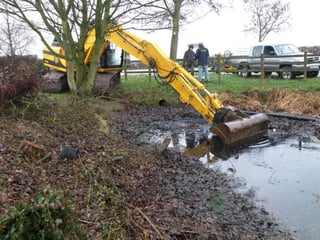.jpg?width=510&name=O%26M-1%20(2).jpg)
We have all seen that newly constructed project or development have initial community impact and luster only to see it become dilapidated and run-down over time. The truth is a projects’ success is not only determined by the initial product or outcome. On-going maintenance and upkeep need to be adequately addressed by designers and owners alike to ensure a project remains a success in the future. It is critical to engage a design team that is well-versed in the importance of O&M manuals, has in-depth knowledge on their specifications/requirements, and focuses on the life of a project well after substantial construction completion is achieved by the contractor. Controlling future maintenance costs, knowing what to replace and when, maintenance intervals and troubleshooting technical equipment are a few aspects project owners need to be well-versed in and also where O&M manuals can be vital. By ensuring adequate O&M manuals and requirements to produce them, project owners will be set up with the tools to make their project a continued success.
First things first, what is an O&M manual? An O&M (Operation and Maintenance) manual is generally a series of documents produced by the contractor to help the owner properly maintain, understand and address key maintenance milestones for their project. It is key designers ensure steadfast contractor requirements in producing complete and informative O&M manuals for project handoff. Common topics covered can include but are not limited to:

- Product data cut sheets requirement
- Maintenance techniques and timing
- Emergency procedures
- Troubleshooting
- Preventative and corrective maintenance tasks
- Warranty information
- Part lists
- Manufacturer maintenance literature
O&M packages are generally drafted and completed by the general or sub-contractor at a projects’ substantial completion or warranty closeout period. The importance of complete and informative O&M manuals is crucial for long-term maintenance and operations. For example, an O&M manual may specify irrigation system winterization requirements and steps to prevent pipe bursts from freezing or recommend pond dredging maintenance procedures to ensure proper long-term performance. They also come in handy for sourcing materials, researching model upgrade possibilities and supplier contact lists for material replacement. At MacKay Sposito, we take O&M manuals seriously and without the time, effort and planning put into these manuals and their directives, projects are not planned for future success. O&M manuals are not only exclusive to new construction, many existing facilities embark on an O&M process to understand their own operations, maintenance and associated costs to more efficiently manage their facilities.
It is key for designers and owners to think about the products and techniques they decide upon in the design development phase, how they will be maintained, and the information needed in the O&M manual to perform the maintenance. Adequately addressing maintenance and specifics of a specialty product or proprietary installation technique can make all the difference in a projects’ current and future success. Does that specialty model have an adequately written manufacturer's manual accompanying it? Has that unique install technique been used before and what have others done to ensure its success? Sure, pervious pavement systems are better for the environment and utilize stormwater infiltration right at the source; however, what about their on-going maintenance needs/costs and overall longevity over standard paving systems? Questions like these are key to answer and address in the initial design phases so O&M requirements can be specified to facilitate a smooth handoff from the contractor to the project owner.
Maybe a different more mainstream product is chosen because there isn’t enough information to address maintenance concerns for a desired specialty product? Or perhaps safer validated install technique is specified instead of a new or special method that doesn’t have enough historical maintenance info to vet success? Initial success does not always mean prolonged success and it is key for designers to think outside the box and years down the road for each product and maintenance technique they specify. Designers cannot just think about ribbon cuttings, that shiny new product, and happy faces. Delivering complete and thoughtful construction documents, including O&M manuals and giving the owner the tools needed to be successful is often as important as that big toy being used for the first time or that interactive exhibit seeing its first users.
What has been your experience with O&M manuals? Email me at nlowry@mackaysposito.com


Leave us a comment below